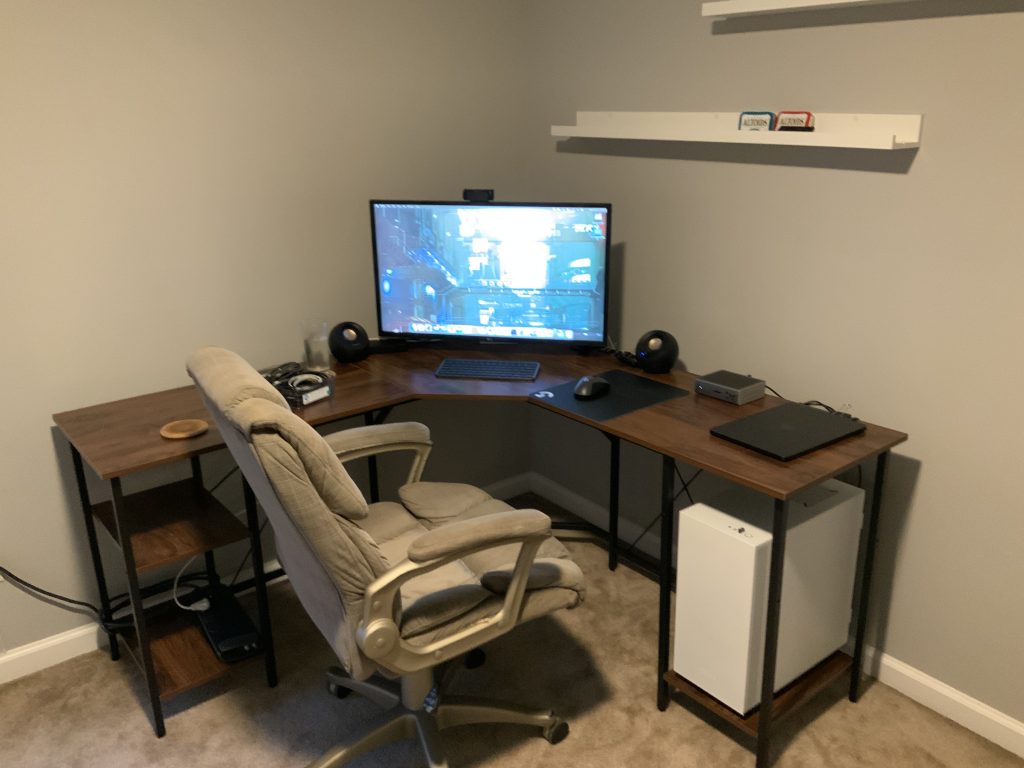Having finally merged some code that’s been stuck in my craw, I decided on a mini-celebration: pizza and eggplant parmigiana, although sadly I forgot about the beer in the fridge. Oh, well; it’ll be there to go with the leftovers 😋.
On the flip side, I think it’s almost time to declare Zeta an operational battle station.
The first problem was I/O performance. Her predecessor, Cream had been pressed into sharing its Wi-FI with Rimuru, leaving the SMB shares on Cream only accessible via wireless clients. Having fished out the aerials that came with Rimuru’s Motherboard 2.0, that solved that connectivity gotcha. But not the simple fact that the file server and the clients are within a meter or two of each other, and the access point is across the house! As much as I suspect a mesh system will be the upgrade path for my network, I’m not replacing that router until it dies or Wi-Fi 7 is ready to rock.
Thus, my shiny new file server was only achieving about 5 MB/s connectivity with my Mac and PC on the other side of the L-shaped monster. Now, I’ve never expected big things of Samba compared to NT’s SMB stack, but Samba’s got waaaay better performance than that and so does Zeta’s hand me down platter drives. My solution to this problem? Gigabit!
At first, I attempted to solve this problem using the combination of libvirt and pfSense. But, I didn’t have much luck getting the bridging to work in order to have a VM on the host be a router while the client functions as the physical. In the end, I discarded this idea and configured Zeta to function as the router for my little local IPv6 network. Yeah, that’s right: I said IPv6, baby! Since this is a local network intended to join Zeta (server), Shion (Mac), and Rimuru (PC) and the occasional other machine, I opted to set this up as IPv6. There’s no real need for IPv4 in my desk’s wired LAN. Maybe I’ll enable IPv4, so I can jack old PowerBook G3 into the switch since MacOS 9.x probably lacks IPv6 support the way Sonoma lacks AppleTalk support 🤣.
Configuring things was pretty easy. A little bit of radvd to enable the Router Advertisement and Router Solicitation issues and for good measure, setup DHCPv6 as an insurance policy, and configured the Ethernet port with the desired address and itself as the gateway. In the future, I may try setting up BIND, so I can have DNS A records map to Zeta’s IPv4 address on the household Wi-Fi and AAAA records map to Zeta’s IPv6 on the desk’s Ethernet, or perhaps even separate domains. But I’m a little hesitant of taking out DNS whenever I reboot the server.
On the flip side, thanks to the lack of fuckwittery, Samba and the SMB stacks on Mac and NT just handles this case fine. Navigating to \\ZETA or smb://ZETA while jacked into the local Ethernet switch nets me about 80 to 115 MB/s, or roughly how fast you can spew data over a Gigabit link to SATA powered things. Seems that the SMB stacks are smart enough to prefer the local Ethernet, but something more DNS aware is how to fix cases like SSH.
The next phase has been setting up the virtual machine environment, which will probably replace the Parallel’s VMs I sometimes spin up on my Mac and the WSL2 environments on my PC. For this, it basically amounted to setting up a bridge interface with the same IP information and using Zeta’s Ethernet port as its bridge port. Then setting the virtual machine’s second interface to bridge to LAN, so that it can be routable over the local switch.
Thus, Shion, Rimuru -> Zeta works. Shion, Rimuru, Zeta -> some VM on Zeta works. Muhuahuaha!
